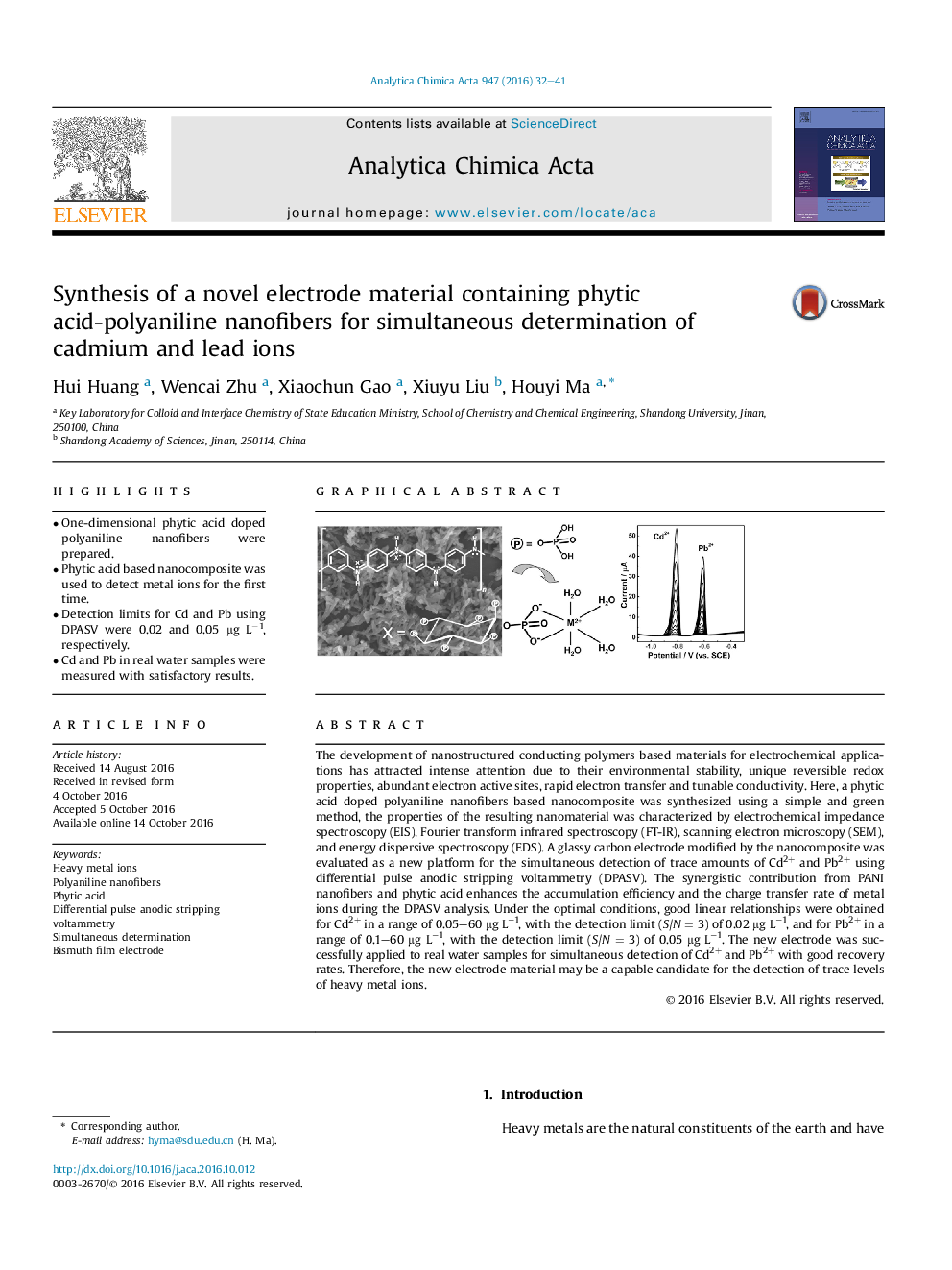| کد مقاله | کد نشریه | سال انتشار | مقاله انگلیسی | نسخه تمام متن |
|---|---|---|---|---|
| 5131381 | 1490885 | 2016 | 10 صفحه PDF | دانلود رایگان |
• One-dimensional phytic acid doped polyaniline nanofibers were prepared.
• Phytic acid based nanocomposite was used to detect metal ions for the first time.
• Detection limits for Cd and Pb using DPASV were 0.02 and 0.05 μg L−1, respectively.
• Cd and Pb in real water samples were measured with satisfactory results.
The development of nanostructured conducting polymers based materials for electrochemical applications has attracted intense attention due to their environmental stability, unique reversible redox properties, abundant electron active sites, rapid electron transfer and tunable conductivity. Here, a phytic acid doped polyaniline nanofibers based nanocomposite was synthesized using a simple and green method, the properties of the resulting nanomaterial was characterized by electrochemical impedance spectroscopy (EIS), Fourier transform infrared spectroscopy (FT-IR), scanning electron microscopy (SEM), and energy dispersive spectroscopy (EDS). A glassy carbon electrode modified by the nanocomposite was evaluated as a new platform for the simultaneous detection of trace amounts of Cd2+ and Pb2+ using differential pulse anodic stripping voltammetry (DPASV). The synergistic contribution from PANI nanofibers and phytic acid enhances the accumulation efficiency and the charge transfer rate of metal ions during the DPASV analysis. Under the optimal conditions, good linear relationships were obtained for Cd2+ in a range of 0.05–60 μg L−1, with the detection limit (S/N = 3) of 0.02 μg L−1, and for Pb2+ in a range of 0.1–60 μg L−1, with the detection limit (S/N = 3) of 0.05 μg L−1. The new electrode was successfully applied to real water samples for simultaneous detection of Cd2+ and Pb2+ with good recovery rates. Therefore, the new electrode material may be a capable candidate for the detection of trace levels of heavy metal ions.
Figure optionsDownload as PowerPoint slide
Journal: Analytica Chimica Acta - Volume 947, 1 December 2016, Pages 32–41
